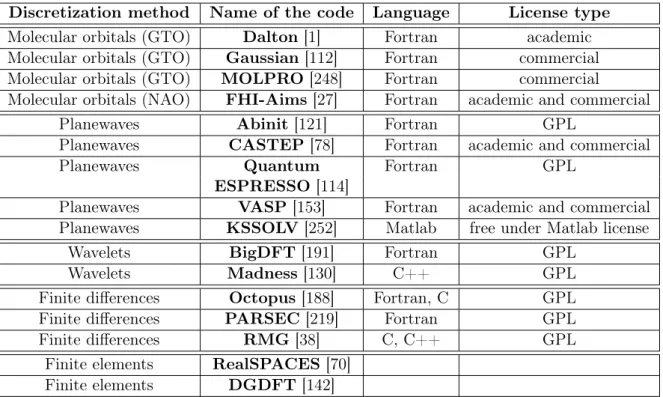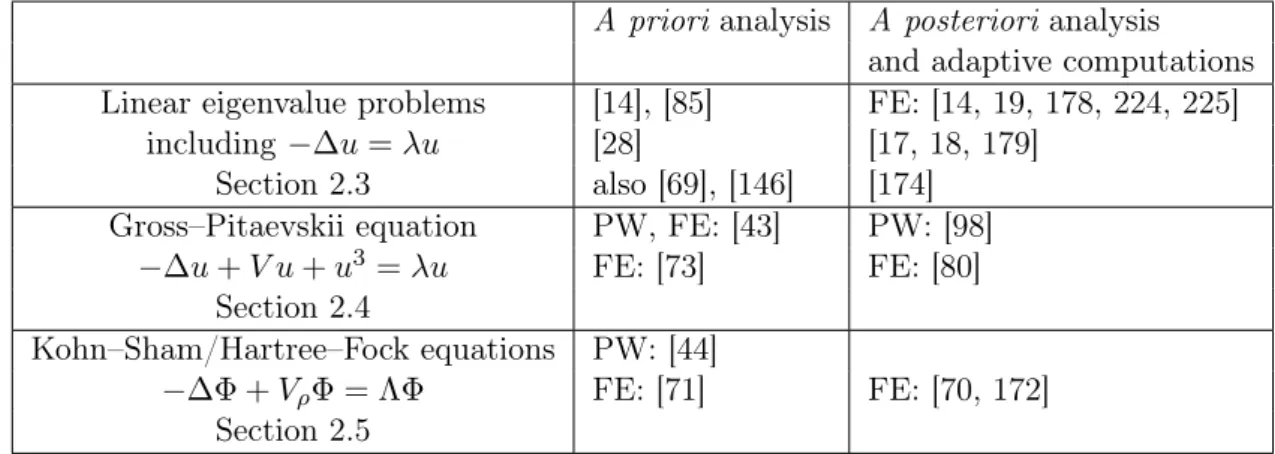Error estimation for linear and nonlinear eigenvalue problems arising from electronic structure calculation
Texte intégral
Figure

![Figure 1.6 – Wavelet example: Daubechies mother scaling function and wavelet used in BigDFT [191].](https://thumb-eu.123doks.com/thumbv2/123doknet/2316810.28127/41.892.255.600.130.385/figure-wavelet-example-daubechies-scaling-function-wavelet-bigdft.webp)


Documents relatifs
L’archive ouverte pluridisciplinaire HAL, est destinée au dépôt et à la diffusion de documents scientifiques de niveau recherche, publiés ou non, émanant des
Unit´e de recherche INRIA Lorraine, Technopˆole de Nancy-Brabois, Campus scientifique, ` NANCY 615 rue du Jardin Botanique, BP 101, 54600 VILLERS LES Unit´e de recherche INRIA
As the aim of the study was the production of stable iron minerals by the conversion of reactive corrosion products, we performed further experiments with corroded iron plates
• A posteriori error estimation tools used to compute the error • The computation of the bound is deterministic. • The second moment of the quantity of interest can be bounded –
Residual based error estimators seek the error by measuring, in each finite element, how far the numerical stress field is from equilibrium and, consequently, do not require
Le gisement solaire en Algérie est le plus important au niveau mondial, surtout dans le grands sud où toutes les applications solaires peuvent voir le jour .C’est pour cela
Thus, in [20] adjoint theory is employed to estimate the simplification error, which improves the error estimation results for internal and negative boundary features with Neumann
We derive an a posteriori error estimation for the discrete duality finite volume (DDFV) discretization of the stationary Stokes equations on very general twodimensional meshes, when





